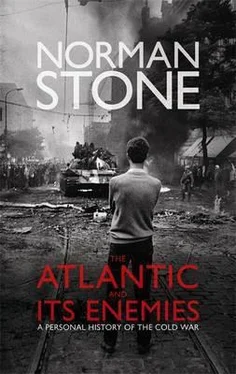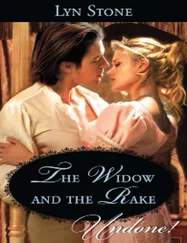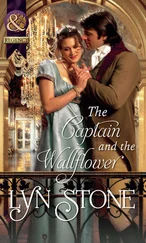One such was Fidel Castro, illegitimate son (by his father’s cook) of a prosperous (and grasping) farmer who had emigrated from Galicia, the Scotland of Spain. He went to a religious school and like other revolutionaries of the Latin world — including France — seems to have taken an anti-clerical line early on because he was badly treated (in his case by Jesuits). His fellow students (in the law faculty) looked down on him because he was a flashy upstart. At this stage he was not a Communist and even had Mussolini’s Works in a dozen volumes on his bookshelves (for a time Mussolini himself had counted as a left-wing figure and had had good relations with the USSR), but in any case the Communist Party itself said that Batista should be supported. In 1953 (26 July) Castro and a few companions tried to seize the Moncada army barracks in Santiago, the rival city of Havana, the atmosphere of which Castro did not like. As with other such pre-revolutionary gambits — Hitler’s Putsch in the Munich beer-hall, or Louis Napoleon’s landing at Boulogne in 1840, when, unable to find an eagle as a symbol, his little group, before being rounded up by the police, made do with a parrot bought at a chandler’s in Southampton — Castro’s affair was near farce, but it gave him another essential revolutionary credential, prison (1953-5). That might have been the end of that, but Batista’s ways were such that opposition built up, from army officers, students, trade unions and even the Church in Santiago; the Americans themselves were uncomfortable, and pushed for improvements. Castro was released under an amnesty; a banker gave him support, and so did an exiled politician. He then escaped to Mexico and Guatemala, where the Americans had overthrown a left-wing movement (led by Colonel Jacobo Arbenz) in 1954 (‘a Soviet beachhead in our hemisphere’, Eisenhower had said, though rumour had it that keeping the low wages paid to the local Indian banana-cutters also counted for something). There, by chance, he met a young Argentinian rebel medical student, Ernesto ‘Che’ Guevara — a one-time sickly youth with a very pious mother who gobbled up stacks of literature. He was trying to make a living as an itinerant photographer. Anti-Americanism and then Marxist ideas were their medium, and the two young men went on to Mexico, where there was a real Left; Castro talked, and talked; he came to dominate a small group of Cubans.
The two gathered some eighty associates, planned a revolution and with $20,000 set off for Cuba in the Granma , a vessel meant for twelve. It landed in December 1956, got some immediate help from a cattle thief and set up in the Sierra Madre, on the south-eastern coast. The invasion began badly. The pilot had fallen into the sea, and most of the men were rounded up; the peasant rising did not occur, and on the contrary the locals were hostile. Castro moved on to a poor region, Oriente province, the poorest in Cuba (with a black population: the black Juan Almeida became a token figure later on) and attacked this or that demoralized, badly paid government post — not a threat taken very seriously to begin with but requiring in the end some response. Batista was clumsy. He had the police beat up people who sang the national anthem after Mass, and the like. It was again part of a pattern that the old order — if that is the right name for Batista’s regime — would make stupid mistakes of this sort, and present the revolutionaries with gifts. Castro was a good enough student of such things, and knew how a guerrilla movement could insert itself into local peasant affairs (as Mao had done) whereas Batista’s men were generally ineptly led conscripts.
When finally Batista’s men did make an effort, they moved up a river valley without securing the ridges on either side and were surrounded, Castro taking much weaponry from them but also releasing the 263 prisoners as a goodwill gesture. In the meantime he had attracted American attention, in June 1958 taking hostage some twenty-four sailors on leave from Guantanamo. He held on to them to deter Batista from using American rocketry. The trick worked: Batista grounded his air force. But there was another important element. Many Americans had a guilty conscience, and a sympathetic journalist, Herbert Matthews, had arrived early in 1957 to live with this new charismatic rebel: he put Castro on the map, himself striking poses of a kind used by Hollywood later on to portray the journalist-as-hero. Senator Mansfield, a warhorse in the making, spoke for an arms embargo against Batista, and, as had happened with the Kuomintang, there was now pressure for human rights, which made for trouble in Havana in 1957. Here, Castro was cunning. He did not want successful rivals, and therefore withheld help from the anti-Batista strikers and the Havana underground; it was not he but the Americans who, on 10 December 1958, told Batista that he should go. There was a final New Year party, and Batista used it as a blind: he got away (to Santo Domingo) beforehand, and early that morning, the Batista women in their finery had to escape by plane to Miami. The chief judge of the Supreme Court, Manuel Urrutia, agreed to take over as temporary president and a general strike in Havana ensured Castro’s arrival in the city. It was a joyeuse entrée of a new ruler, and he began quite well: there was not even much out-of-hand killing of the Batista men.
But this moment did not last for long. Very early in 1959, Castro at once took over from the Havana people, and Urrutia escaped, disguised as a milkman. Castro was not just aiming to succeed Batista and proclaim yet another exercise in radicalism. There was to be a social and by implication an anti-American revolution. The first steps involved rent reductions, wage increases and on 1 May 1959 the establishment of a militia. American property was taken over, and there were fights with Esso and Shell. But Castro was popular enough on the Left, and that included much of the American Left, which saw in him only a sort of Jacksonian democrat. Beards ruled (as they had done ever since the 1830s, as a badge of the Left: thus Marx). Writers and artists popular-fronted themselves in the thirties Comintern manner: Juan Goytisolo appeared; Picasso applauded; Le Corbusier offered to design a proper prison provided Picasso’s murals were not used; a well-known French agronomist, René Dumont, offered his services but was expelled for criticizing Castro’s plans for huge collectives to grow pineapples that could not compete with those of Abidjan. Pablo Neruda appeared but, out of jealousy, the local poet, Nicolás Guillén, tried to sabotage the visit. Castro had read some books, and he did impress men such as Graham Greene, who had lived for a time in Haiti and recognized the problems involved in the Caribbean. At this stage Communists were only tangentially involved: only one, Carlos Rodríguez, had joined Castro, at the last minute, in the Sierra, and even he had been a Batista minister. However, Castro made international waves as the fight against American interests grew, and in February 1960 Mikoyan appeared. He warned against precipitate action, but got the measure of Castro’s vanity: he ‘can’t stand not being front-page news’.
Radicalism proceeded apace. The trade unions were taken over, and a land reform was proclaimed (maximum holding: 67 acres). Castro refused to hold elections, and his brother Raúl appeared as a Saint-Just figure, shrilly and self-righteously denouncing opposition: it grew, even among the peasants, but was divided and in any case there was an expectation that the Americans would come to the rescue. They were certainly provoked, as their business interests were taken over, and as Castro refused, for weeks, even to see the ambassador (he himself ran affairs chaotically, from a hotel floor, and addressed million-strong crowds with hours-long speeches). Eisenhower was bewildered: he meant well enough and so did Christian Herter, the new head of the State Department, but early in 1960, with cattle ranches being invaded, there were television rantings by Castro as to the expropriation of property: American companies, including General Electric and Remington Rand, had $200m at stake in October 1960. Trials in public started, in the sports centre, with public executions, and Castro vastly resented the criticism. By May 1960 there were huge anti-American rallies, but there was also a small flood of refugees, at 2,000 per day on occasion. The free press was now closed down, the printers refusing to print it (‘anti-democratic’) and in July the US Congress voted to let the President reduce Castro’s sugar quota. Castro responded by expropriating all foreign property, and there were demonstrative foreign displays, as in the Organization of American States and in New York, when Castro visited the United Nations, stayed in a Harlem hotel, and met Khrushchev.
Читать дальше












![Edward Ellis - Adrift on the Pacific - A Boys [sic] Story of the Sea and its Perils](/books/753342/edward-ellis-adrift-on-the-pacific-a-boys-sic-s-thumb.webp)